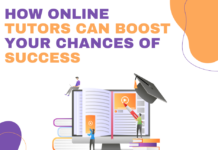E-learning has become very common nowadays. Everybody prefers it when they want to learn something new. According to ProsperityforAmercia.org, it is estimated that revenue from E-Learning is recorded as more than $47 Billion, it’s easy to say that nowadays people tend to look for shortcuts everywhere and E-learning is kind of the one.
But it has also robbed them of the old ways of studying. Sitting together in a group with the teacher. Constant interaction with peers. On the spot, doubts clarification. Exchanging hand-written notes.
So are you ready to manage the problems that come along? Want to know how other students are dealing with the same? This is just the right place.
I have done some research on this issue and seen documentaries of the students discussing their own experiences of E-learning. And hence, I have covered everything here. As you scroll down the page you’ll get to know what E-learning is, how it came into the picture, why it is so popular, and how to cope with it.
Table of Contents
What is E-learning?
E-learning is a learning system with the use of electronic devices such as computers, laptops, projectors, mobile phones, I-pads, the internet, etc.
The idea behind it is very simple. To spread the knowledge all over the globe regardless of geographical constraints.
With its help, the motive of reducing costs in distance learning is achieved.
Learning now is no more limited to four walls, a roof, and one teacher with the entire class. The dimensions have widened for easier information flow. Without your physical presence in a classroom, you can access the course, from anywhere around the world, at any time.
Evolution of E-learning
From tiny cells in your body to this entire universe, everything is evolving. And so is the concept of E-learning.
How old is the concept of E-learning?
- Let me take you back to the mid-1980s. It was the beginning of the E-learning era. Computer-based training (CBT) was introduced, which enabled learners to use study materials stored on CD-ROMs.
- Around 1998, the Web took over CD-based training by providing learning instructions, materials over the web, ‘personalized’ learning experience aided by chat rooms, study groups, newsletters, and interactive content.
- In the late 2000s, we know how mobile phones came into the picture and combined with the internet, both took over the entire world. And since then, we are the witnesses to the enormous growth of this learning system.
Existing scenario:
Covid-19 has shown the world a lot of things. In technical terms, a hike in the use of E-learning platforms was recorded. As physical learning wasn’t feasible, the world had to adapt to the virtual environment.
Not only the schools/institutions but even the government and corporate sector is shifting online.
E-learning platforms started attracting students, teachers, and everyone who wants to learn something by offering discounts & free trial access. Mindvalley is an online learning platform offering courses on Mind, body, and Entrepreneurship offering a 50% Coupon for Membership for first-time users, While Coursera offers a 70% Discount on all premium courses. You can find almost offers or discounts on all kinds of E-Learning platforms.
With the help of E-learning, every industry is flourishing. There is no field where E-learning isn’t used. From changing a flat tire to learning to make your favorite dish, everything you can search on the internet. God knows I did.
Teachers who never even used e-learning platforms had to learn how to teach their students virtually. Ironic, isn’t it?
If we go through every factor, E-learning was not a piece of cake for everyone in the beginning. Considering the lockdown phase and the current scenario of a country like ours.
Let’s have a look at what factors affected students’ E-learning!
Factors that affected students’ E-learning
Poor Connection
Students faced connectivity issues from both the teacher’s side and sometimes their side. Due to this, they weren’t able to grasp concepts properly.
Financial conditions
Some of the students are not able to buy their laptops to attend online classes. And many of them live in remote areas where they do not even have access to wi-fi, which further poses a problem.
Insomniacs
Being slaves to electronic gadgets, excessive screen time has affected the sleep cycle of students already. One of the reasons why students feel sleepy during online classes.
Teachers making notes for students
Meanwhile, students are not able to attend their classes properly, their teachers have been sharing notes via video tutorials, PDFs, PPTs, etc. making it a little easier for them to recall what has been taught.
Supportive guides
Many students even reported that the teachers were supportive enough to extend the submission dates considering the online glitches.
Google being the savior
Even if access to knowledge has become a lot easier. The motivation to study has died. Online exams have lost their essence. The purpose of studying is lost.
No wonder everyone is getting good grades in the online exams.
Zoning in and out of the classroom
The very essence of group learning and classroom activities is lost. It has further led to lost interest and focus in learning.
Screens are no good to talk to
As there is no physical sitting, the interaction is seen considerably lesser in this scenario. No one wants to talk to the screens.
Cannot cook well with just the recipe.
The biggest concern has been that there is no practical knowledge experience. It’s hard to keep track of theoretical stuff without implementing it in real life. There are lesser means of testing theoretical knowledge alone.
Exploring the creative side
In 2015, the mobile learning market was worth just $7.98 billion. In 2020, that number had risen to $22.4 billion.. The students have accessed many E-learning courses in the past two years and learned so many skills while sitting at home, exploring their creative sides.
What is its future scope?
According to various researches, the day is near when there will be no notebooks to scribble on, but E-notebooks. E-learning has been widening its horizons and it might one day completely replace physical means of learning.
Many companies are adopting e-learning techniques to provide education to their employees belonging to different regions to save their time. Many students have been accessing courses of international universities, diversifying their circle.
So if we talk about the future scope of E-learning it seems on the top of the priority list.
Unlimited access to infinite knowledge, what else do we want?
Drawbacks of E-learning:
We have almost discussed the basic advantages and disadvantages.
But you’ll have a clearer idea after reading the basic difference between older modes of learning and E-learning.
Comparison with a physical mode of learning:
| Physical mode of learning | E-learning |
| Physical interaction with peers. | No physical interaction with peers. |
| A strict timetable to be followed maintaining the proper timeline of course. | No such timeline is needed. Access your course at any time. |
| The physical form of exams/ quizzes to test their knowledge, | Non-proctored/open book tests are held mostly. |
| Accessed from a particular place only. | Can be accessed from anywhere all around the world. |
| Active during class. | Might get sleepy/ tiring after a while because of the excessive screen time. |
| Motivation to study when in a group. | Self-study might get boring and confusing. |
Major Health drawbacks:
- Prolonged time facing the screen increases stress and anxiety.
- Burnout is also very common among students. The major factors contributing to burnout are exhaustion, cynicism, and detachment.
- Depressive symptoms and sleep disturbances are also common, further leading to irritation/ frustration.
- Neck pain, prolonged and distorted positioning, strained ligaments, muscles, and tendons of the vertebral column are also seen.
Affect on lifestyle:
As it affects the physical as well as mental health, it indirectly affects the lifestyle of a person as well. Many of the students shared how they started feeling moody all the time. One moment they feel irritated, the other enthusiastic and the other lazy. Without doing any physical activity, they feel tired already. They do not feel like doing anything.
Us humans need to keep our brains working every single day. We must do some chores to keep it active. Otherwise, we might go crazy doing nothing.
Tips to cope with this and overcome the drawbacks–
Mental health awareness campaigns- (Mental Health experts)- One important factor that we need is to raise awareness about mental health issues among ourselves. Institutions can organize such campaigns for the students as well as their parents. People need to address such issues without any fear/ shame.
Providing mentors- In case students are facing any issues, they should be appointed a mentor whom they can reach out to for help.
Safe space to talk about mental health- Society must have a safe space where students can talk about such issues with each other. Students must reach out for help from their parents/ mentors/ friends/ even health experts.
Self-awareness- Students should be self-aware about the issues they are facing, whatever is bothering them, and which areas they are lacking in.
Keep physical health in check-
- Take at least 20 seconds of a break from the screen every 20 minutes to keep your eyes from restraint.
- Avoid excessive exposure to intense light, small working distance, and smaller font size.
- Take breaks between online sessions to release accumulating tension and maintain interest and focus.
- Doing breathing exercises, yoga or meditation will relax your body and mind.
- Avoid smoking and excessive caffeine intake. Smoking has a lot of side effects such as depression, anxiety, and weak learning outcomes and so does caffeine intake which increases the chances of mental health disorders like insomnia, anxiety, etc.
- Stay hydrated and maintain a healthy diet.
Conclusion:
E-learning is rapidly growing every day. It’s not rocket science but very important to stay up-to-date with new opportunities that E-learning brings forth.
Here are a few more tips to make your E-learning experience a little better:
- Practice time management. – You need this to make sure that you are consistent and finish your course at the proper time.
- Make physical notes. – You’ll be able to retain concepts in your memory more easily.
- Ask questions more often in the class to make your learning experience more interactive.
- Eliminate distractions- Turn off all the notifications, and sit where there are no distractions around to increase efficiency and focus.
- Reward yourself- After beating your deadline, reward yourself with any activity or anything that keeps you going.
In short, learning‘s purpose remains the same regardless of the mode. In this evolving era, all we have to do is to adapt to it. Adjust accordingly and once you do, you are good to go.


